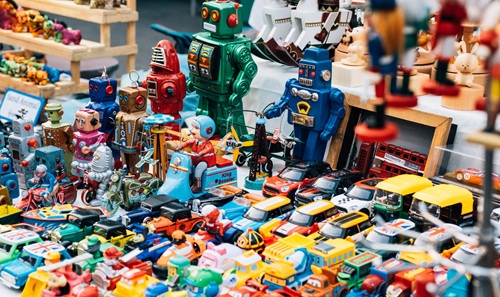After a decade of slow formalisation, the organised toy market in India has entered a higher-growth phase. Independent market research places the Indian toys market at roughly USD 1.9–2.6 billion in 2024, with double-digit or high single-digit CAGRs forecast through the decade as demand for STEM/educational toys, branded playthings and exports rise. These figures show the scale that domestic manufacturers and global buyers are now addressing.

Policy architecture that changed the game
Public policy has been pivotal. Since 2021–23 the government rolled out measures such as Toycathon (innovation challenges), quality and safety emphasis (Quality Control Orders) and a focused Production-Linked Incentive (PLI) allocation for toys. The headline PLI commitment — discussed publicly as a Rs 3,500 crore-class incentive to build domestic manufacturing capability — is designed to attract larger organized players, anchor contract manufacturing and build ancillary ecosystems. These policy steps have reduced entry friction for scale manufacturing and improved the investment case for both domestic entrepreneurs and multinational brands wanting “Make in India” sourcing.
Supply chain, manufacturing and exports
Historically India was a price-competitive source for certain toy categories (wooden toys, some plastic and soft toys), but the big shift is toward higher-value, compliant manufacturing: push into contract manufacturing for global brands and more rigorous product safety/quality standards. Government and industry data show exports have been rising — India improved its global toy export ranking in recent years and recorded material export growth into 2024–25, signalling that domestic manufacturers are finding overseas buyers and scaling capacity.
Industry structure: winners and opportunities
A handful of domestic firms (tier-1 manufacturers and contract suppliers) are growing fast, led by players such as Funskool which reported strong FY24–25 performance and is targeting further revenue expansion in FY26. Large domestic toy manufacturers are increasingly combining branded product lines with OEM/ODM manufacturing for international customers — a profitable dual model. At the same time, thousands of MSMEs remain active in niche and regional toy segments, creating opportunities for cluster development and ancillary services (moulding, textiles, packaging).
Demand dynamics: domestic retail and digital channels
Consumer demand in India is being pulled by three trends:
- Rising disposable incomes in Tier II–III towns and increased affordability for branded toys.
- Growth of edtech and STEM learning products bundling subscriptions with physical toys.
- E-commerce penetration and omnichannel retail that shorten time-to-market and improve SKU economics. These demand drivers are helping premium and educational toys gain share versus purely low-cost imports.
Challenges and risks
Despite positive momentum, the sector faces real constraints. Quality and safety compliance must be standardised across MSMEs to meet export buyer requirements. Capital intensity for tooling and automated lines is still a barrier for smaller firms. Dependence on specific imported components (electronics, pigments, specialised plastics) and international commodity swings could compress margins. Finally, competition from low-cost Asian suppliers remains strong unless India can sustain scale, compliance and cost competitiveness.
Strategic moves for stakeholders
For manufacturers: invest in quality certification, design/IP and selective automation; consider hybrid branded + OEM models.
For policymakers: continue targeted incentives, streamline raw-material procurement and offer cluster-level technical support.
For investors: prioritise firms with export channels, long-term supply contracts with global brands, or proprietary STEM/educational IP.
Future Outlook
By 2025 the Indian toy industry is transitioning from import-substitution promises to measurable export and revenue gains. With policy support (PLI and quality push), rising domestic demand, stronger players scaling fast, and early export momentum, India can realistically build larger, more sophisticated toy manufacturing clusters in the next 3–5 years — but execution on quality, design and supply-chain depth will determine whether India is a niche supplier or a durable global hub.

